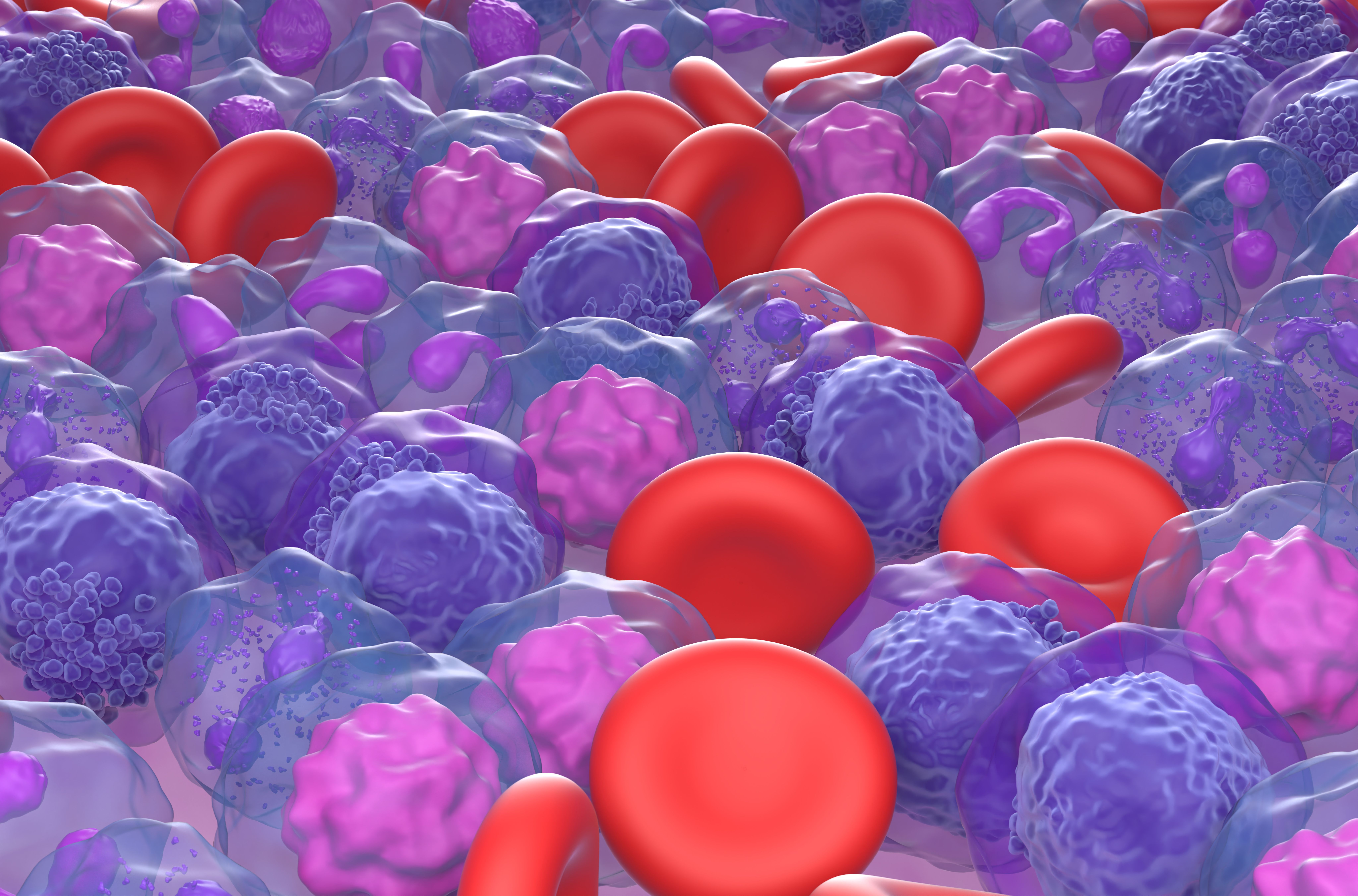- Center on Health Equity & Access
- Clinical
- Health Care Cost
- Health Care Delivery
- Insurance
- Policy
- Technology
- Value-Based Care
Researchers Characterize Defining Feature of Pediatric AML Subtype
Recently recognized by the World Health Organization, acute myeloid leukemia (AML) with t(7;12)(q36;p13) has previously been associated with MNX1 and ETV6 signaling, although MNX1::ETV6 fusion transcripts have only been confirmed in approximately half of cases.
Through whole transcriptome and whole genome sequencing, researchers of a new study are suggesting a certain gene expression be considered the defining feature of acute myeloid leukemia (AML) with t(7;12)(q36;p13).1
Recently recognized by the World Health Organization (WHO), AML with t(7;12)(q36;p13) has previously been associated with MNX1 and ETV6 signaling, though MNX1::ETV6 fusion transcripts have only been confirmed in approximately half of cases, explained the researchers, publishing their findings in Genes, Chromosomes and Cancer.
All 12 patients included in the analysis had MNX1 as a defining feature of their disease. | Image Credit: © LASZLO - stock.adobe.com

Reported prevalence of AML with t(7;12) has varied, with some research pointing to a 20% to 30% prevalence amongst infant patients and other research pointing to a prevalence as low as 4% among patients diagnosed before the age of 2 years.
Using samples from pediatric patients with AML with t(7;12), researchers of the new study suggest that while patients with the disease subtype may express varying fusion transcripts and translocation breakpoints, the subtype is homogenous phenotypically. All 12 patients included in the analysis had MNX1 as a defining feature of their disease.
“It has previously been shown that aberrant MNX1 expression in the leukemic cell line GDM-1 carrying t(6;7)(q23;q36) is driven by an enhancer hijacking event due to a translocation,” explained the researchers. “In a study using a preleukemic t(7;12) iPSC model, we could show that the t(7;12) translocation alone is enough to give rise to the high expression of MNX1 and recently, in a collaborative follow-up study using this preleukemic iPSC model system, we have identified that the underlying mechanism leading to the ectopic expression of MNX1 is an enhancer hijacking event.”
The patients included in the analysis showed high ectopic expression of MNX1, MNX1-AS1, and MNX1-AS2. The researchers were able to show that the ectopic expression of MNX1 stems from 1 allele.
Patients were aged between 0 and 2 years, with all but 1 patient being diagnosed before the age of 1 year. Among the patients, the researchers identified novel gene expressions, with gene fusion transcripts involving ETV6, including with NOM1 and LMBR1. Though fusion transcripts involving ETV6 were observed, levels were low and were not identified in all patients.
In a study published at the end of 2023 by some of the same researchers, the group had similar findings, with researchers of that study describing heterogenous gene fusion transcripts but all patients expressing MNX1, suggesting the gene expression being a driver in the disease subtype.2
In the current study, researchers compared survival among their patients with other patients with AML, finding no notable differences in event-free survival (EFS) or overall survival (OS) despite the patients with AML with t(7;12) having a higher rate of central nervous system disease (5 of 11) compared with patients who had non-t(7;12) AML (41 of 252).1
“AML with t(7;12) is considered a high-risk aberration in most current treatment protocols and often stratified to consolidation with SCT [stem cell transplant] in primary therapy,” they wrote. “Our cohort is small, making comparisons both with other AML and previous studies unreliable, but 6/10 of our patients relapsed after standard chemotherapy. Nonetheless, salvage therapy including SCT was effective, and OS was excellent (10/11 surviving).”
Eleven of the 12 patients had received treatment; 1 patient died before receiving treatment. All 6 patients who relapsed after receiving induction therapy experienced relapse within 12 to 19 months from their diagnosis.
Among the 11 patients who had received treatment, 5-year EFS was 0.42 (95% CI, 0.21-0.87) compared with a 5-year EFS of 0.63 (95% CI, 0.57-0.69) for patients with non–t(7;12) AML. Five-year OS for patients with AML with t(7;12) was 0.89 (95% CI, 0.71-1) compared with 0.73 (95% CI, 0.68-0.79) for patients with non–t(7;12) AML.
References:
- Östlund A, Waraky A, Staffas A, et al. Characterization of pediatric acute myeloid leukemia with t(7;12)(q36;p13). Genes Chromosome Canc. 2024;61(11):e70003. doi:10.1002/gcc.70003
- Östlund A, Staffas S, Norén-Nyström U, et al. Heterogenous gene fusion transcripts found in t(7;12)(q36;p13) acute myeloid leukemia but with similar gene expression profile. Blood. 2023;142(S1):1560. doi:10.1182/blood-2023-179814
